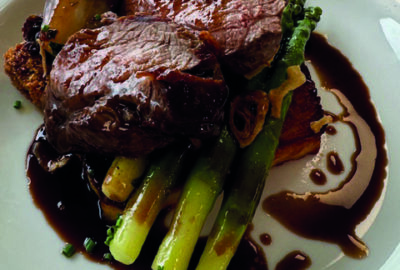University caterers are set to implement a range of initiatives following a successful, fact-finding trip to California.
Members of The University Caterers Organisation (TUCO) embarked on a study tour to experience first hand ‘Residence Life at California’s Top Universities’.
The TUCO study tour was organised by the award-winning TUCO Academy as part of its learning and development programme. A group of 11 TUCO members, comprising of hospitality and catering professionals from universities across the UK, visited five universities in seven days. These included the California Institute of Technology (Caltech), University of California, Los Angeles (UCLA), the Culinary Institute of America, the University of California, Berkeley, and Stanford University.
Matthew White, chairman of TUCO and study tour attendee, said:
“It was an amazing opportunity to experience first-hand how university catering is managed in the USA. We found that the main differences were the innovation around the use of technology, and that the UK is slightly ahead with the names of its dining areas. The USA name them the ‘dining common’, compared to the UK, now calling them ‘hall of residence’ or ‘dining room’.”He added: “We also noticed that the furniture styles and the interior design in the USA consisted of a lot of wood and marble, whereas UK dining areas have more ‘customer friendly’ furniture, for example, sofas, poseur tables and armchairs. The UK have introduced more brasseries, coffee bars and cafes, and the USA are still predominantly using grand scale dining halls.”
Some of the findings:
Shared accommodation– During the visit to Caltech, the group met with the senior dining services team and discovered how they successfully operate a mandatory meal plan system, including a fully stocked kitchen for students to help themselves to snacks from. In a marked difference to the UK, most university accommodation was shared, which Caltech claimed brought positive benefits to student’s health and wellbeing.
Small Plates- At UCLA, sustainability and healthy eating were at the very heart of their operation. Food is bought within a 500-mile radius, from organic and sustainable farms where possible. They also look for earth-friendly products with low use of petroleum and oil-based fuels, have recyclable and compost programs, as well as teaching students not to overeat or waste food. One outlet, Bruin Plate, served all portions on smaller plates, each no more than 400 calories, to help manage the consumption of calories and raise awareness of different food types. The university also had an onsite designated gluten free room, demonstrating just how seriously they take their approach to dietary requirements.
Trash Fish- The executive chef at Bruin Plate explained that his team are now using ‘Trash Fish’ to make dips and goujons to help use up ‘catch’ which would not normally be sold. Their objective is to increase interest and reduce the impacts of fishing.
Healthy Eating- The healthy eating theme continued across all the universities visited, and delegates spotted salad bars, plant-based dishes, grains and home-grown honey being offered daily. They were also shown how homemade salad dressings, jams and sauces are an excellent way to reduce sugar and sodium intake.
Menus of change-
In 2012, The Culinary Institute of America introduced ‘Menus of Change’, in collaboration with Harvard T.H. Chan School of Public Health, to create a long-term, practical vision for the integration of optimal nutrition and public health, environmental stewardship and restoration, and social responsibility concerns within the foodservice sector and beyond.
‘Menus of Change’, in collaboration with Harvard T.H. Chan School of Public Health, to create a long-term, practical vision for the integration of optimal nutrition and public health, environmental stewardship and restoration, and social responsibility concerns within the foodservice sector and beyond.
Matthew White concluded:
I will be investigating how we can introduce something similar in the UK. We want to influence the future, and now I’m back I can’t wait to share our experiences from this eye-opening tour.


